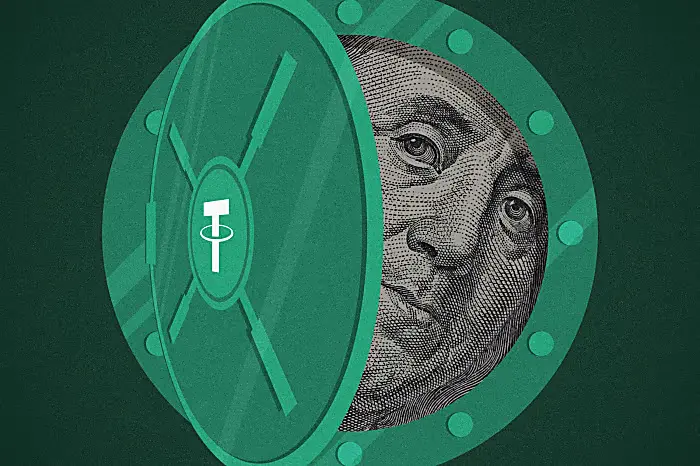Foresight Ventures: Monopolistic Web3 Social Protocols & Soulbound Tokens
Author: Alice, Foresight Ventures
Article Summary:
- The essence of social products is matchmaking. Web3 maximizes the matchmaking ability of applications and enhances the efficiency of user information acquisition by building a unified data layer.
- The accumulation of quality relationships and network effects requires reaching a critical point to form a qualitative change. The process is tortuous and spirals upward, and the Web3 infrastructure allows for the fastest iteration of new economic governance models.
- The "fat protocol, thin application" theory may not necessarily apply in the social track. Both protocols and applications face pressure from homogeneous competition, making it difficult to form a completely monopolistic ecosystem; uniqueness is the fundamental of competition.
- Compared to existing Web3 identity protocols, Soulbound Tokens (SBT) have stronger advantages in scenarios such as non-transferable reputation, governance airdrops, negative reputation, and wallet recovery. Before SBT can be widely implemented, many issues such as privacy, security, and storage need to be resolved. In the future, it is likely that SBT will coexist with various identity solutions, just like L1 scaling solutions.
The article "Foresight Ventures: Breaking the 'Walled Garden', Web 3.0 Reshapes the Social Paradigm" mainly outlines the panorama of Web3 social tracks due to space limitations and does not delve deeply into some controversial topics. This article will discuss the evolution path of Web3 social, the monopolistic nature of social protocols, and Soulbound Tokens (SBT).
Evolution Path of Web3 Social
Returning to the essence of social interaction, we believe that the essence of all social products is matchmaking, that is, information matchmaking and quality networking. For example, people are willing to pay high prices to join high-end offline clubs to gain better networking resources; people are willing to spend more time on Twitter rather than other platforms because it can most efficiently push the knowledge they are most interested in and need.
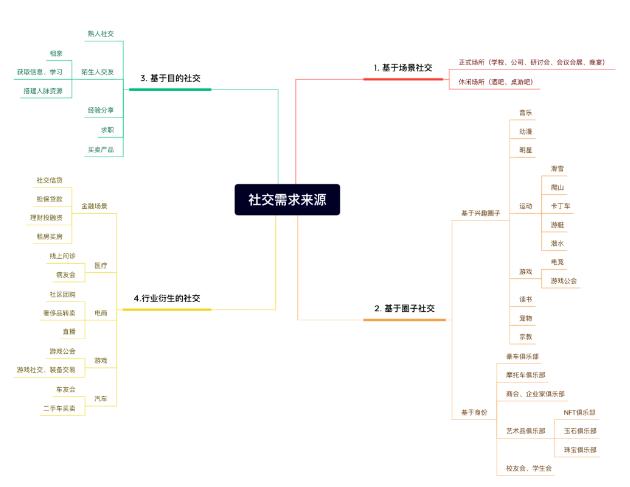
Compared to Web2 products, the core advantage of Web3 is the ability to build a high-performance, unified data layer and utilize composability to maximize the social matchmaking capability of Dapps and enhance the efficiency of user information acquisition.
As described in the previous article "Walled Garden," in Web3, everyone's identity, relationships, social interactions, and content creation data should belong to themselves, rather than being fragmented in walled gardens. The return of data sovereignty will greatly reduce the cost of data reading and usage, making everyone's on-chain identity and achievements public and transparent, allowing Dapps to more efficiently discover and connect with quality networks and creators.
However, we return to the age-old question of whether the chicken or the egg came first: the accumulation of quality relationships and network effects requires reaching a critical point to form a qualitative change, and before that, for most users, Web2 social will still be a better choice. So, should Web3 startups first develop quality resource providers or first develop C-end users?
The author believes that the core should be to reward quality resource providers, namely high-quality creators and quality networking relationships. For example, Mirror attracted a group of quality KOLs during its cold start, and Phaver selected the best creative content through content staking; returning to the Web3 creator economy itself, blockchain has a natural advantage in helping high-value groups realize reputation monetization, completely eliminating the centralized platform's cut. Therefore, I remain relatively optimistic about the prospects for Web3 social development.
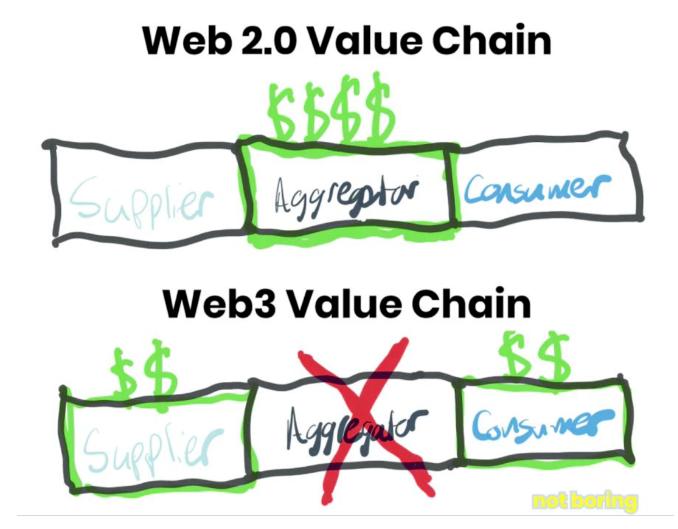
From the user's perspective, we cannot ignore the elephant in the room—everyone is very accustomed to using Web2 social applications, and the user stickiness of the giants is extremely high. This does not mean that Web3 has no opportunity; just as GameFi challenges traditional gaming and DeFi challenges traditional finance, social can also attract users through tokenomics and rewrite the rules of the game. Furthermore, compared to DeFi and GameFi, the significance of SocialFi lies in its lower entry barriers, more universal reward mechanisms (everyone can receive rewards), and higher user engagement frequency, providing a Web3 gateway for more curious young people. Social may be the most promising track to onboard the next billion users.
Of course, the accumulation of quality relationships and network effects requires reaching a critical point to form a qualitative change, and the process is spiraling upward. It requires continuous iteration of infrastructure, experiences with Tokenomics Ponzi schemes, and attracting Web3 native residents while gradually breaking the circle to attract more Web2 users. Only companies that can continuously iterate on products and business models and explore reasonable and sustainable PMF will survive. The Web3 infrastructure precisely allows for the fastest iteration of new economic and governance models, with startups acting as a "hive" for experimentation, learning, and rapid development. In this process, data/content/relationships are no longer the private property of platforms; network effects will accumulate as public goods, and the composability of data protocols will make each innovation a starting point for the next innovation.
Exploration of Web3 Social Monopolization
In August 2016, Joel Monegro from the American fund USV published an article titled "Fat Protocols." The "fat" protocol theory posits that the value capture models of blockchain and the internet are different. In the internet era, most value is captured at the application layer, such as Google, Facebook, Amazon, Alibaba, Tencent, etc. The underlying protocols that support the internet, such as TCP/IP and HTTP, do not capture value. In the blockchain era, value will concentrate at the shared protocol layer, with only a small portion of value distributed at the application layer, giving rise to the "fat" protocol and "thin" application theory.
For most blockchain-based protocols, two factors lead to this result:
- Shared data layer - underlying data and blockchain transactions have equal and free access, leading to low-cost, homogeneous competition among applications;
- Token incentives - protocols can use tokens for value capture to enhance system security (the higher the token price, the higher the security) and achieve commercialization.
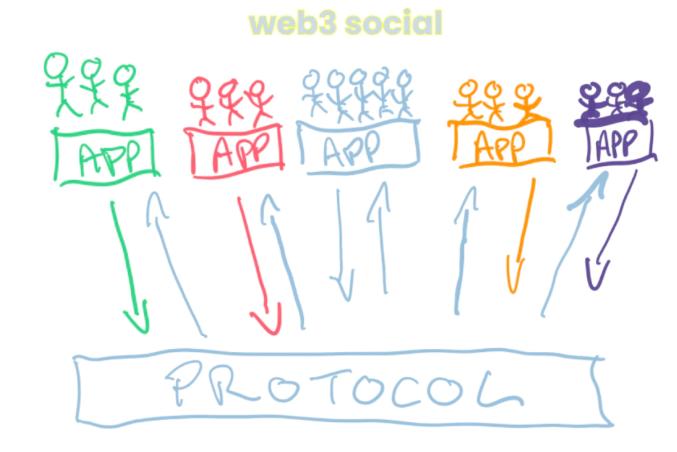 However, I believe the fat protocol theory is not a panacea, at least not necessarily applicable in the social track.
However, I believe the fat protocol theory is not a panacea, at least not necessarily applicable in the social track.
a. Data is not everything in competition
Firstly, a shared data layer does not imply homogeneous competition. Data barriers are indeed important, but they are not everything in competition. Looking back at the KSF (Key Success Factors) of Web2 social products (aside from data), they can be summarized as follows:
- WeChat's zero-cost messaging
- Telegram's anti-censorship
- Twitter's short tweets
- TikTok's sliding match
- Snapchat's self-destructing messages
Aside from data, for social applications, product functionality, user experience, matchmaking efficiency, and community atmosphere are all soft barriers, and Web3 should add tokenomics to these factors.
b. Competitive theory applies to protocols as well
In fact, the low-cost, homogeneous competition caused by the composability described in the "fat" protocol theory applies to protocols as well. Based on decentralized and open-source systems, protocols can also be easily reused and optimized to create products more favored by users. For example, when Compound was still an open-source protocol, Lendf reused their code for optimization. Lendf then rapidly advanced, quickly entering the industry's top ten in locked value; social protocols are similar, as the collection, cleaning, and presentation of on-chain data are not monopolistic resources. New entrants can still quickly access various databases and challenge the existing industry landscape.
c. What is a reasonable value capture mechanism?
As pointed out by the "fat protocol theory," token incentives are an important way to capture value. However, many protocol token designs are unsatisfactory, with the core issue being: social interaction is a matter with strong network effects. When a protocol issues tokens, it is akin to an amusement park starting to charge admission, creating a barrier to entry for developers and users.
The superstructure theory suggests that the ideal foundational protocol layer should be free-to-use, at least from the user's perspective, it should be imperceptible to use. Such infrastructure can onboard the next billion users. The protocol layer should act as a minimally extractive coordinator, "the less a protocol extracts in coordinating exchanges, the more economic exchanges will occur for users."
However, this vision leads to another problem: the demise of Web1 protocols was precisely due to a lack of sufficient commercialization capability. How should the value creation and value capture of Web3 protocols be reflected? For this question, I prefer to understand social protocols as B2B businesses and applications as B2C businesses, ideally, protocols charge project parties while applications charge users. It is worth noting that protocols need to achieve sufficient business scale before they can begin commercialization; premature commercialization may hinder their development. From this perspective, the application layer may find it easier to achieve value capture: they are closer to user groups, making it easier to establish trust and stickiness, and they can gain user recognition through revenue sharing.
The balance between token value capture and commercialization is a topic worth exploring in depth, and the discussion is not limited to social; it also encompasses public chains, DeFi, GameFi, NFTs, and other tracks, which may warrant a dedicated study in the future.
d. The dynamic balance between social protocols and applications
The bargaining power between applications and protocols is dynamically changing. When an application occupies most of the traffic of a protocol while having to pay a large fee to the protocol, the application may tend to fork the protocol to gain greater benefits, leading to the phenomenon of "applications stealing protocol value," such as large GameFi games setting up exclusive App-chains.
e. Uniqueness is the fundamental of competition
In summary, the author believes that both social protocols and social applications face pressure from homogeneous competition, making it difficult to form a completely monopolistic ecosystem. In such a competitive environment, uniqueness is the fundamental of competition for blockchain protocols and applications. The uniqueness of social projects is reflected in the following aspects:
- Combinatorial ability: In a cooking competition, a table is filled with various top ingredients (storage solutions, data models, identity DID). Each chef has different choices of ingredients (demand scenarios, technical paths), cooking methods (product design, tokenomics), flavor profiles (core customers, community tone), culinary skills (commercial landing ability), and innovation capabilities, resulting in a wide variety of dishes. Even the same dish will have different outcomes when made by an ordinary person versus a state banquet chef. Moreover, the ingredients are dynamically changing (data accumulation, technology upgrades), and how to capture the best state of the ingredients for one's use will also determine the final quality of the dish.
- Token design: If tokens are an inevitable choice for Web3 applications to compete with Web2 giants, our focus should be on how to design the x2earn model more reasonably. Just like the subsidy wars among internet platforms, what we need is not a flood of subsidies but to subsidize core high-value users and early participants; on the flip side of the coin, we should consider how to design token models that capture the value creation of the community, rather than simply applying a "governance + utility" dual-token model as a Ponzi scheme. We can draw from gaming concepts, using random drops of equipment, extending externalities, etc., to weaken the purely to-earn attribute, using tokens as tools to design more reasonable reward mechanisms that bring users back to the joy of social interaction, the sense of achievement from being recognized, and the honor of being a community builder. We can also refer to the Ethereum Foundation, which enhances bonding among members through offline networking.
- Community atmosphere & product performance: As an open bilateral platform, user data and relationships may be easily replicated, but community atmosphere, product experience, and first-mover advantages are difficult to replicate. Unlike GameFi, where users may choose to switch to clones if the earning efficiency decreases, bilateral platforms inherently possess user stickiness—developers may not have such a good user base if they switch to another protocol ecosystem, and ordinary users may not find such a good community atmosphere or high information matching efficiency if they switch to another community.
- Team execution ability: Good teams are very scarce in Web3, especially in the social field, where a closely cooperating team that can handle technology, understand users, have sharp market insights, strong execution capabilities, and abundant resources is needed.
Soulbound Tokens (SBT)
a. What are Soulbound Tokens (SBT)?
The name "Soulbound" comes from the game World of Warcraft, where soulbound items cannot be traded with other players, mailed, or gifted to others; they can only be used by the player themselves. Soulbound tokens, or SBTs, are non-transferable tokens bound to your wallet (account). Any online or offline organization or individual can issue SBTs to a wallet, such as your graduating school, employer, charitable organizations you have participated in, DeFi platforms where you have taken loans or participated in liquidity mining, and DAO organizations you have deeply engaged with, among others. Your wallet can receive various SBTs.
SBTs are non-transferable and non-tradable, which weakens the speculative nature of NFTs and returns more to the essence of social interaction, proving people's identity, experiences, and reputation. Its original intention is to help users obtain persistent identity, trust, and cooperation models in the credit-lacking Web3 world, reducing the likelihood of witch attacks (where a single user fabricates an identity to attack) and improving capital utilization efficiency.
b. What are the application scenarios for SBT?
Identity credentials without application scenarios hold no value for users. Compared to other Web3 identity solutions, SBTs have advantages in the following scenarios:
Non-transferable reputation: SBTs cannot be traded or transferred. In contrast, Lens NFTs and Poap badges can be sold on OS, allowing one to obtain OG status for just a few dollars, making SBTs more valuable and authentic.
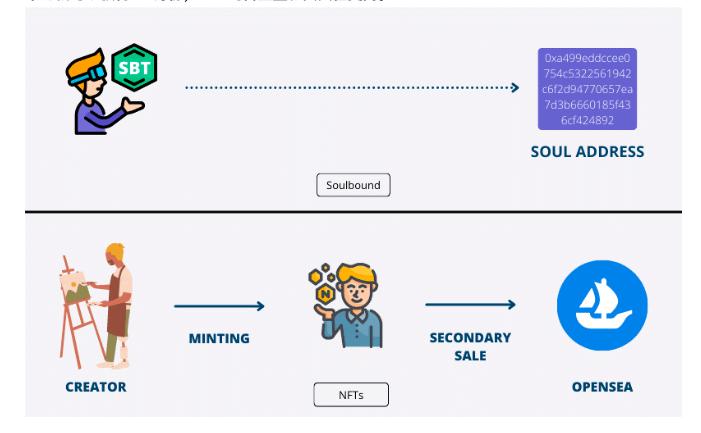
- Governance & airdrops: SBTs can be used to filter out core early contributors and grant them higher governance voting rights, making community governance fairer and returning to the essence of democratic governance, no longer merely a battleground of capital. Real experiences and identity verification help project parties accurately distribute airdrops, efficiently matching more genuine, effective, and high-value community contributors.
- Negative reputation: If someone commits wrongdoing on-chain or has a high loan default, they will receive negative reputation SBTs, allowing SBTs to act as "Sesame Credit scores." Users can use social reputation for loans, and protocols can conduct background checks on users before lending, such as using zk zero-knowledge proofs to verify that the customer has no prior default records or excessive leverage.
- Wallet recovery: If a wallet's private key is lost, it can be recovered by obtaining the recognition of a majority of SBT community members, similar to the logic of WeChat account recovery. In contrast, ordinary wallet recovery methods (in fact, most wallets do not have them) involve designating a few wallet guardians, which poses a single point of failure risk.
c. Do all identity data need to be on-chain?
Of course, our ideal state is for an identity protocol to contain all identity information, like the metaverse in Ready Player One. However, there are several issues in achieving this:
- Data storage difficulty: Storing all data on-chain is extremely challenging; possible solutions include only uploading hashes.
- Information deletion and modification issues: In social scenarios, users need to change information or delete historical information at any time, which is something blockchain cannot do.
- Overexposure issues: On-chain data is public and transparent, lacking privacy, especially negative reputations that involve many sensitive user information; solutions include zk zero-knowledge proofs, for example, an SBT can prove that you participated in Gitcoin's 14th round of donations without revealing specific donation amounts, projects, times, etc.
- How to incentivize data providers to onboard: Not all traditional Web2 institutions are willing to go on-chain, as it involves their core competitive barriers and user privacy concerns.
In summary, SBT identity data will likely adopt a hybrid on-chain and off-chain storage approach.
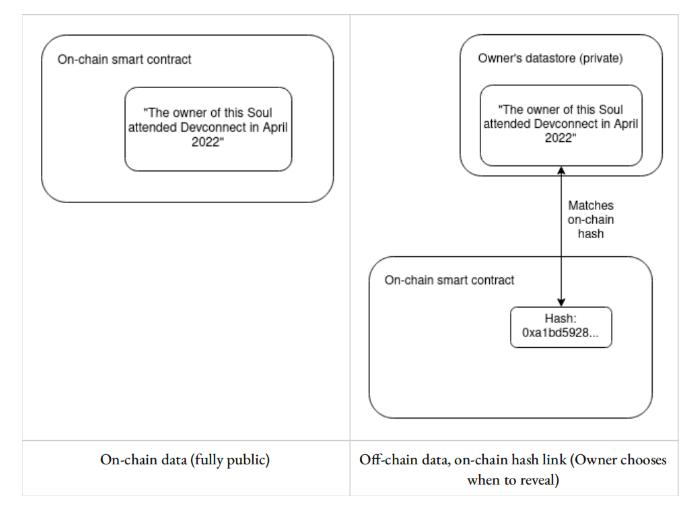
d. Will the Ethereum Foundation personally create SBTs? What will the competitive landscape between SBTs and existing identity protocols look like in the future?
In the off-chain identity track, identity standards such as W3C Verifiable Credential have been promoted for five years, with mature technical solutions and high institutional recognition. A number of high-performance identity solutions supporting cross-chain functionality have emerged based on this standard, such as Unipass and Disco. In the on-chain identity track, different projects are also landing in segmented scenarios, establishing their own communities, such as Project Galaxy and Poap.
Although many new projects have emerged in the SBT track, such as Firstbatch and Marry3, the final outcome is still far from being determined. The Ethereum Foundation has not yet announced an official solution, but it is likely to take action, and it may become a market hotspot in the future. However, the foundation has historically been slow to progress, and many issues need to be resolved before large-scale implementation, such as storage solutions, institutional collaboration, and zk privacy issues…
Even if Ethereum has its own SBT solution, many identity protocols are likely to coexist like scaling solutions (L2/subchains/Appchains), allowing social applications to choose the identity solution that best fits their current stage and user needs.
Reference
https://jacob.energy/hyperstructures.html
https://www.placeholder.vc/blog/2019/10/6/protocols-as-minimally-extractive-coordinators
https://foresightnews.pro/article/h5Detail/7671
https://jacob.energy/hyperstructures.html
https://www.varunsrinivasan.com/2022/01/11/sufficient-decentralization-for-social-networks
https://www.panewslab.com/zh/articledetails/D99422028.html
https://papers.ssrn.com/sol3/papers.cfm?abstract_id=4105763
https://vitalik.ca/general/2022/06/12/nonfin.html
https://www.youtube.com/watch?v=TbyVyVNsyys




